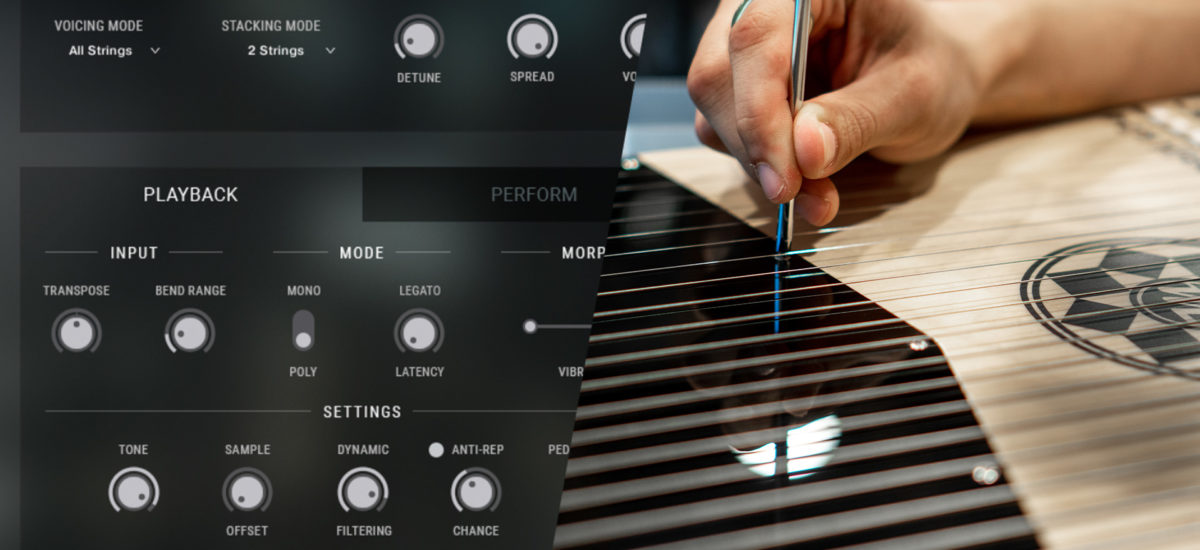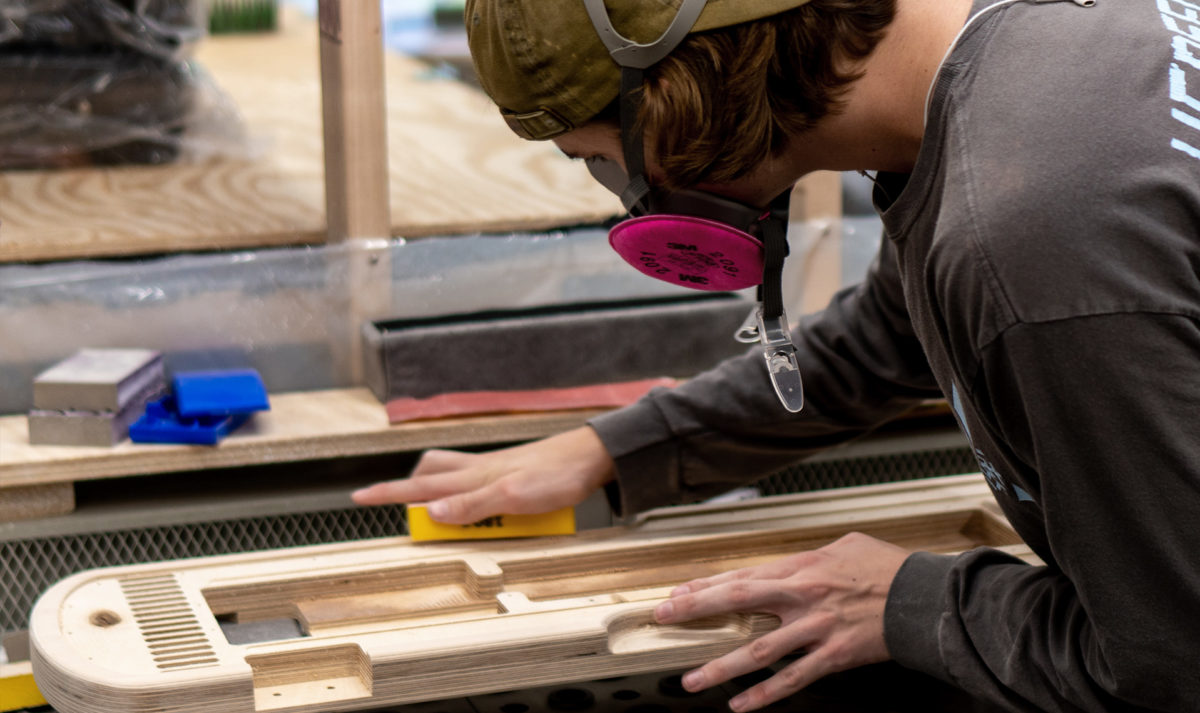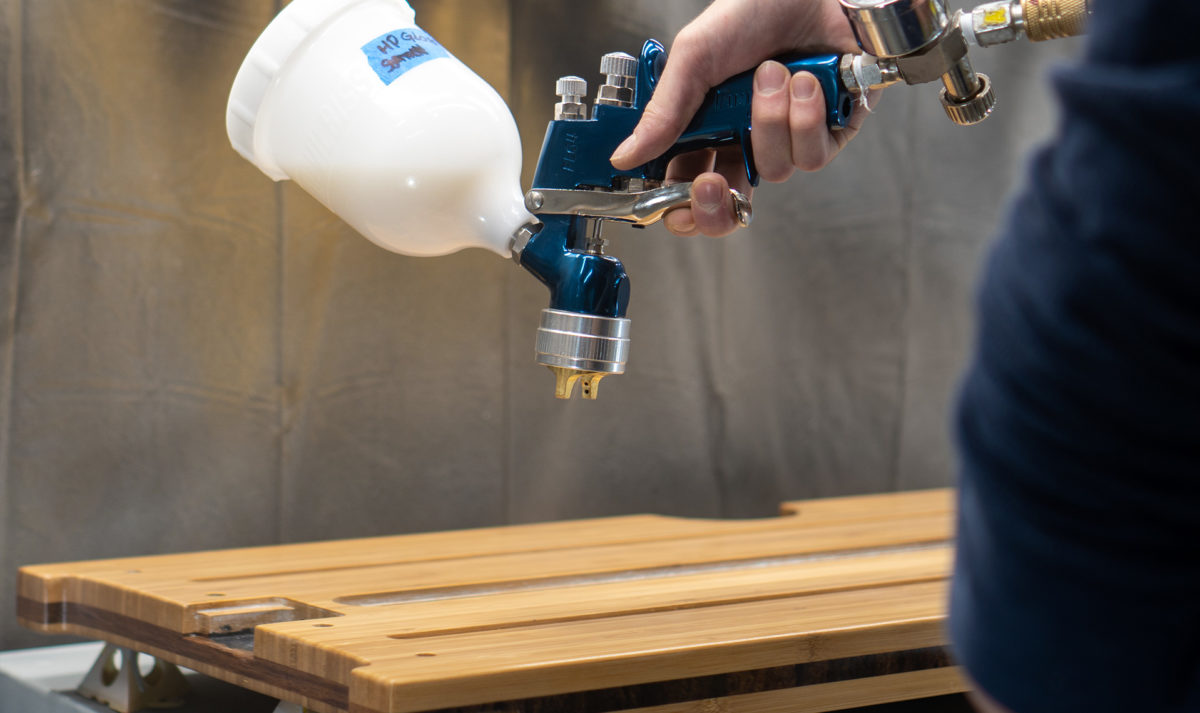
From instrumental innovator Jacob Collier to the legendary Stevie Wonder, the rise of the harpejji has been dazzling. Designed and manufactured by Marcodi Musical Products from 2007, this unique string instrument now has a solid following of fans who love the expressive sound. With many models and variations available, the handmade versions are a lifetime investment and treasured by players the world over. Recently, virtual instrument developer Impact Soundworks collaborated with Marcodi to create a licensed virtual instrument for Kontakt Player. What’s more, it’s now available directly from the NI Online Shop, and can be managed via Native Access. To celebrate, we sat down with the head honchos of both Impact Soundworks and Marcodi to find out how they brought this unique instrument to life – both in physical and virtual forms.

How did you first connect?
Andrew Aversa (Impact Soundworks): I first saw a harpejji ‘in person’ at the music trade show NAMM, and was instantly fascinated with its unique design and tone. From an aesthetic point of view it’s also a really beautiful instrument in many eye-catching designs.
Tim Meeks (Marcodi Musical Products): We make our instruments from birch, hard rock maple and bamboo and they each have a slightly different sound. We’ve also done hundreds of custom paint jobs and even complete vinyl overlays, which is really fun because the harpejji is such a big canvas for bespoke artwork.
Aversa: As soon as I got home from the show I ordered a custom one for myself from Marcodi. As it turns out, they’re based not more than an hour from where I live. The idea of sampling the instrument occurred naturally as I spent time with it, since I was enjoying hooking it up to my DAW and experimenting with all sorts of FX processing.
Meeks: Andrew sent some samples to me and I thought they sounded really great. I figured that there would be people who would encounter their software-based instrument without having any prior knowledge of the harpejji. If their first introduction to the harpejji is this great sounding sample set, it could only be a positive thing for Marcodi. So we gave Impact Soundworks the green light to license it.

What are the considerations for sampling such an unusual instrument?
Meeks: This harpejji, the K24, was only the second harpejji model to go to market. It introduced a new onboard preamp that gave each string its own channel with independent electronic muting, volume compensation and EQ. This is the largest harpejji model with the biggest note range (A0 to A5), 24 strings and 15 frets. It has two separate outputs, one for the 8 bass strings and another for the 16 treble strings.
Aversa: The advantage of these direct outputs is that you don’t need to worry about external noise or mic selection. Our focus was solely on a pristine, transparent signal chain consisting of just a pre-amp and audio interface. Tuning was the most important consideration, since any stringed instrument will naturally start detuning as you strike the strings.
How did you go about capturing the unique playing style of the harpejji?
Meeks: There are a number of ways to perform the harpejji, from picking to strums and harmonics. But there are two most common types of playing style, regular string tapping as well as finger-muted tapping.
Aversa: Deciding how to play the harpejji for the purposes of a sample library was quite the challenge. It turns out that using a pick didn’t sound very different from the regular tapping method, but we were able to get a lovely warm sound by palm muting. To capture the range of tones possible from the bass to treble strings, we used a guitar-style sampling approach of recording one octave per string, which gave us loads of overlap and therefore lots of flexibility for playback. For the slides, or “Short Legato” as we call it in the UI, we performed semi and whole-tone slides up and down each sampled fret on each string. This is something that can’t be easily emulated (unlike vibrato or pitch bends) so I’m glad we did it this way, even though it was time consuming.

How did you capture the distinctive muted timbre?
Aversa: We experimented with different techniques. The tricky part is that anytime you mute a string, you change the pitch. Also, because of how the pickups of the Harpejji are designed, if your hand or finger is not on the string, the signal will stop. This means that using a physical mute (like a piece of cloth) wouldn’t work. We ended up using a more guitar-like technique of lightly resting one palm on the string while tapping with the other hand, which tamps down the decay while retaining the bass and body of the sound.
How did you deal with programming and playing back these samples in a realistic way?
Aversa: That was a real dilemma because the harpejji is like a cross between a piano and a guitar. With a piano, for example, it’s easy: you hit C4 on your MIDI controller and a C4 sample is played. With our Shreddage guitar series, we have several recordings of the same pitch on different strings, so we use a virtual hand & fret selection algorithm to pick the best sample. But because the harpejji is very unique, and can be played in many different ways, neither of these approaches was 100% perfect. In the end we opted to go with a system that lets the user select whether to use the bass strings, treble strings, or both, as well as layering in neighbouring strings to create a sort of acoustic chorus sound. This way, we were able to make use of the larger pool of samples whilst offering extra tonal possibilities.
Meeks: I thought that the folks at Impact Soundworks captured the essence of the instrument really well, but I also made sure that they added the tone knob, which is an important part of the harpejji. They did a great job with modelling that aspect of the sound.

What about recreating vibrato and pitch bend playing techniques in the virtual realm?
Aversa: Since the harpejji is a very expressive instrument, recording ‘live’ vibrato or bends would have only offered a small slice of what’s possible with the physical instrument. So we decided to go with ‘smooth’ vibrato and bends generated via Kontakt scripting, rather than the pre-recorded kind, so that users could have the most flexibility over speed and depth.
Meeks: The vibrato and string bending can be played via your keyboard’s modulation and pitch bend wheels. The harpejji can also be strummed, and for that you can try quick arpeggios with your MIDI keyboard.
You’ve designed many sound design snapshots too?
Aversa: Oh yes, there are lots of preset options with Modern Harpejji. Mellow Stereo Bass is one of my favorites, using the bass strings with two voices, light detuning, compression, and just a touch of reverb, which gives it an almost fretless bass-esque quality. It’s surprisingly beautiful when played in the upper registers. Distant Piano Dream is another interesting one using only the bass strings. It has more spatial FX processing and as the name suggests, has a piano-like quality that’s wonderful for broad, spacious chords. Snappy Clav was one of the first preset patches I made, because it felt the most natural after playing the real thing. The treble strings have a clavinet-like sound, so expanding that across the whole range with some bright EQ & compression makes for a fantastic, funky keys sound. Just add a wah-wah pedal and you’re good to go!

How do you think the Impact Soundworks Modern Harpejji works with other instruments in your line up?
Aversa: I’m a big fan of layered keyboard sounds, especially those rich stacks you hear on high-end workstation keyboards, so combining it with our Pearl Concert Grand will give you lots of great possibilities. Since the harpejji bass is so warm and full, it works well as a substitute for a typical electric bass sound. Try it alongside Shreddage 3 Archtop or Stratus in a pop, blues, or funk arrangement. Alternatively, if you want a more acoustic ensemble sound, Acoustic Revolutions 3 and Pedal Steel are both great accompaniments.
What’s next for the harpejji?
Meeks: At Marcodi, we’re blown away by how much the harpejji has already taken off in a relatively short amount of time. Our main hope is to keep making the instrument better and to find ways to utilise the sound in more varied musical genres. We are humbled and grateful that Impact Soundworks found the sound of our harpejji instruments to be as inspiring as we do. It’s a valuable and deserving addition to their catalogue and we hope that it’s really successful.
Impact Soundworks’ Modern Harpejji is available now. Learn more, hear demos, and purchase at our online shop.















